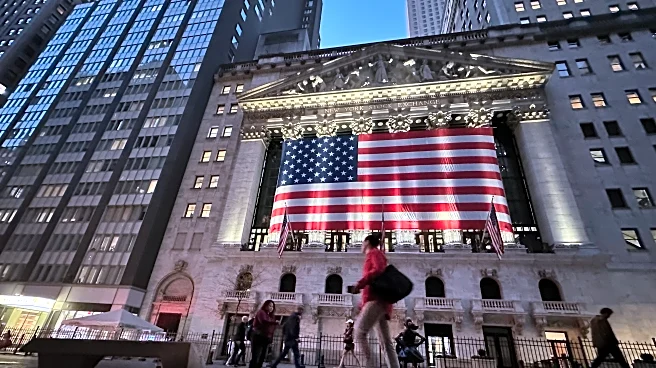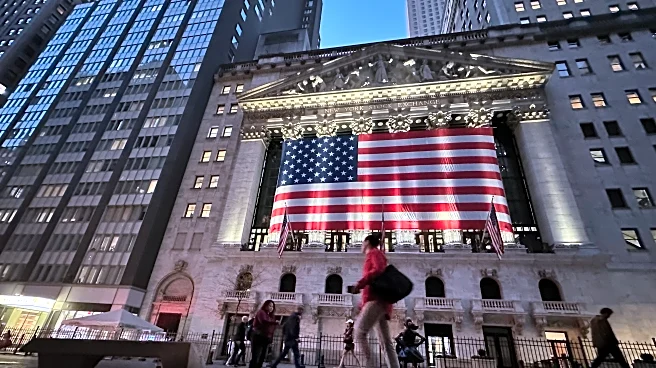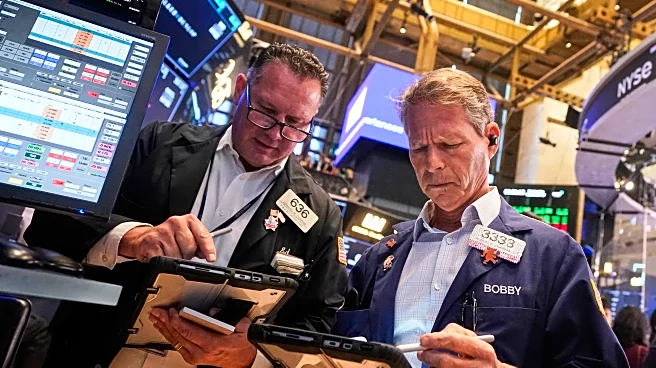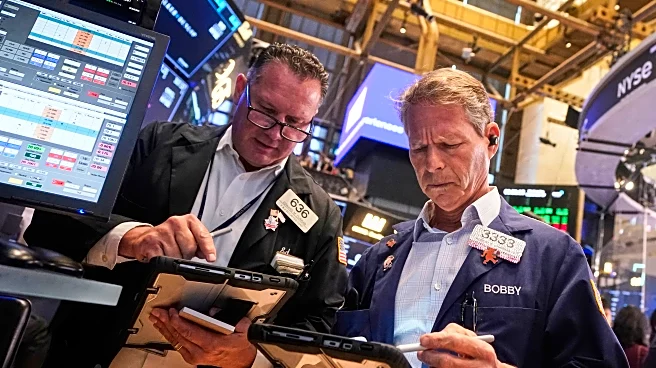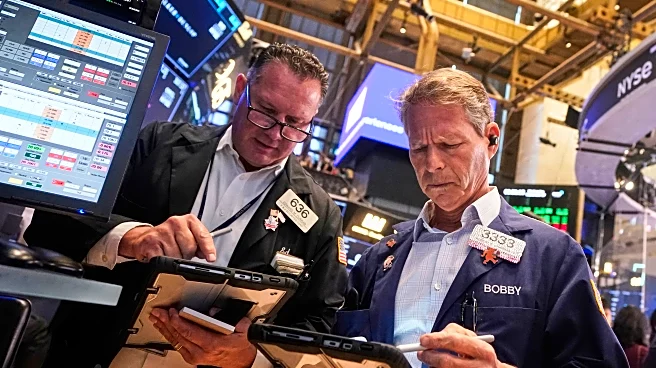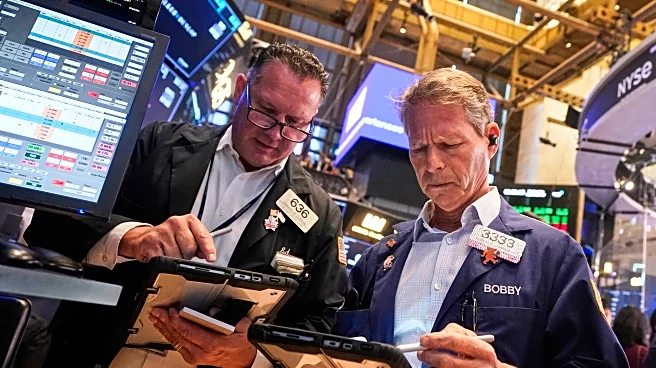What's Happening?
U.S. stock markets experienced a rebound at the end of the week, with the Dow Jones, S&P 500, and Nasdaq all posting gains on September 26, 2025. This recovery followed a mid-week downturn, with the indices still recording modest weekly losses. The Federal Reserve's recent interest rate cut, the first since December, and the potential for further cuts by year-end, have been significant factors in market movements. Fed Chair Jerome Powell cited a cooling labor market as a reason for the rate cuts. Additionally, President Trump announced new tariffs on heavy trucks, pharmaceuticals, and furniture, which affected various sectors differently. Paccar, a U.S. truck manufacturer, saw its stock rise due to its domestic production advantage, while pharmaceutical companies like Eli Lilly were less impacted due to exemptions for U.S.-made products.
Why It's Important?
The Federal Reserve's actions and President Trump's tariff announcements have significant implications for the U.S. economy and various industries. The rate cuts are intended to support economic growth amid a cooling labor market, but they also reflect concerns about inflation and economic stability. The tariffs aim to bolster domestic industries but could lead to increased costs for consumers and potential trade tensions. The stock market's response indicates investor optimism about the Fed's support and the resilience of certain sectors, but there is also caution about the broader economic impact of these policies. The developments highlight the complex interplay between monetary policy, trade policy, and market dynamics.
What's Next?
Investors and market analysts will closely monitor upcoming economic data, including the September jobs report, to gauge the Federal Reserve's next moves. The potential for further rate cuts remains, but the Fed has emphasized caution and data dependency. The impact of the new tariffs will also be watched, particularly any responses from trading partners like China. Additionally, the looming government shutdown, if Congress fails to pass funding by September 30, could introduce further uncertainty into the economic outlook. These factors will influence market sentiment and the broader economic landscape in the coming months.

